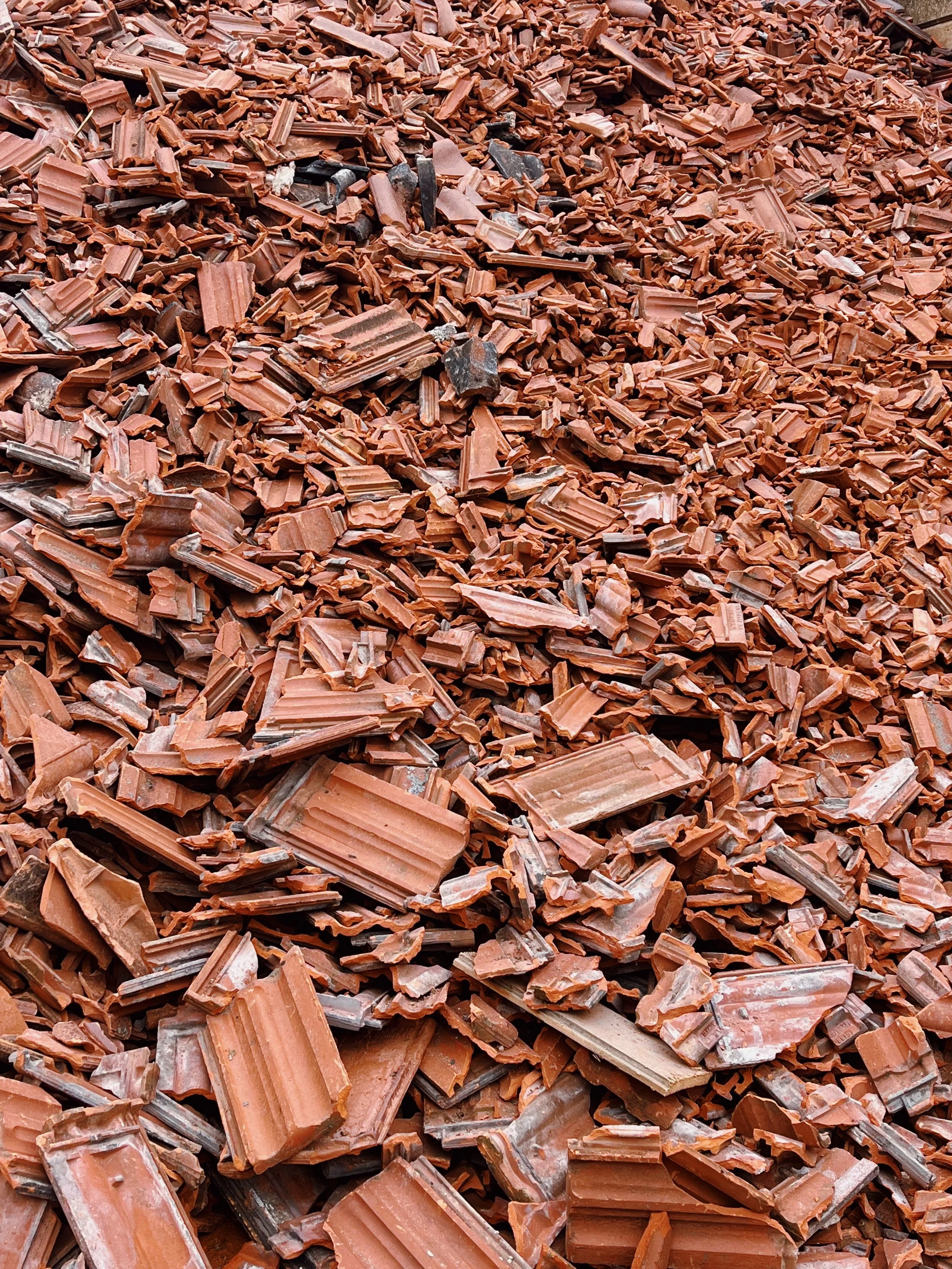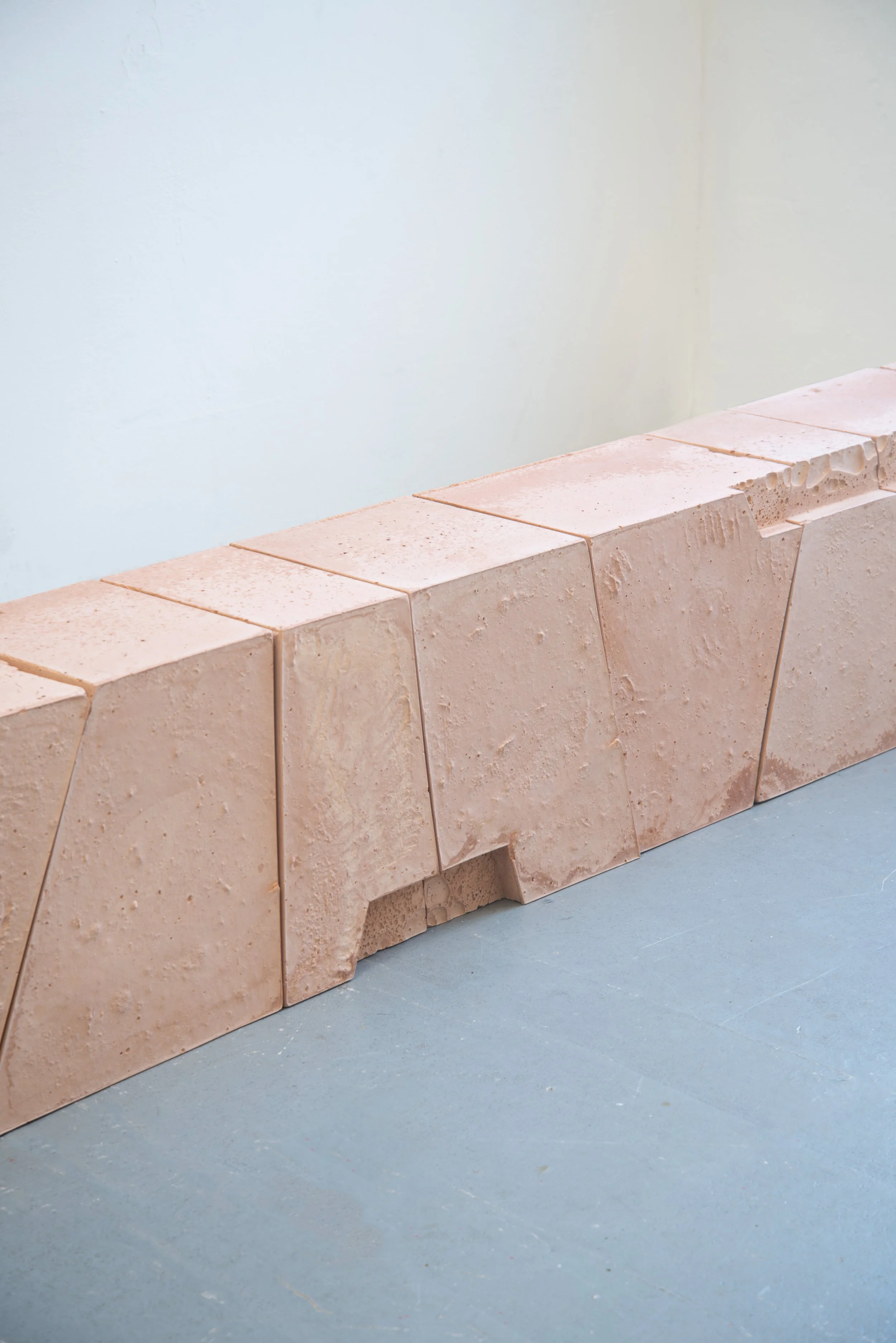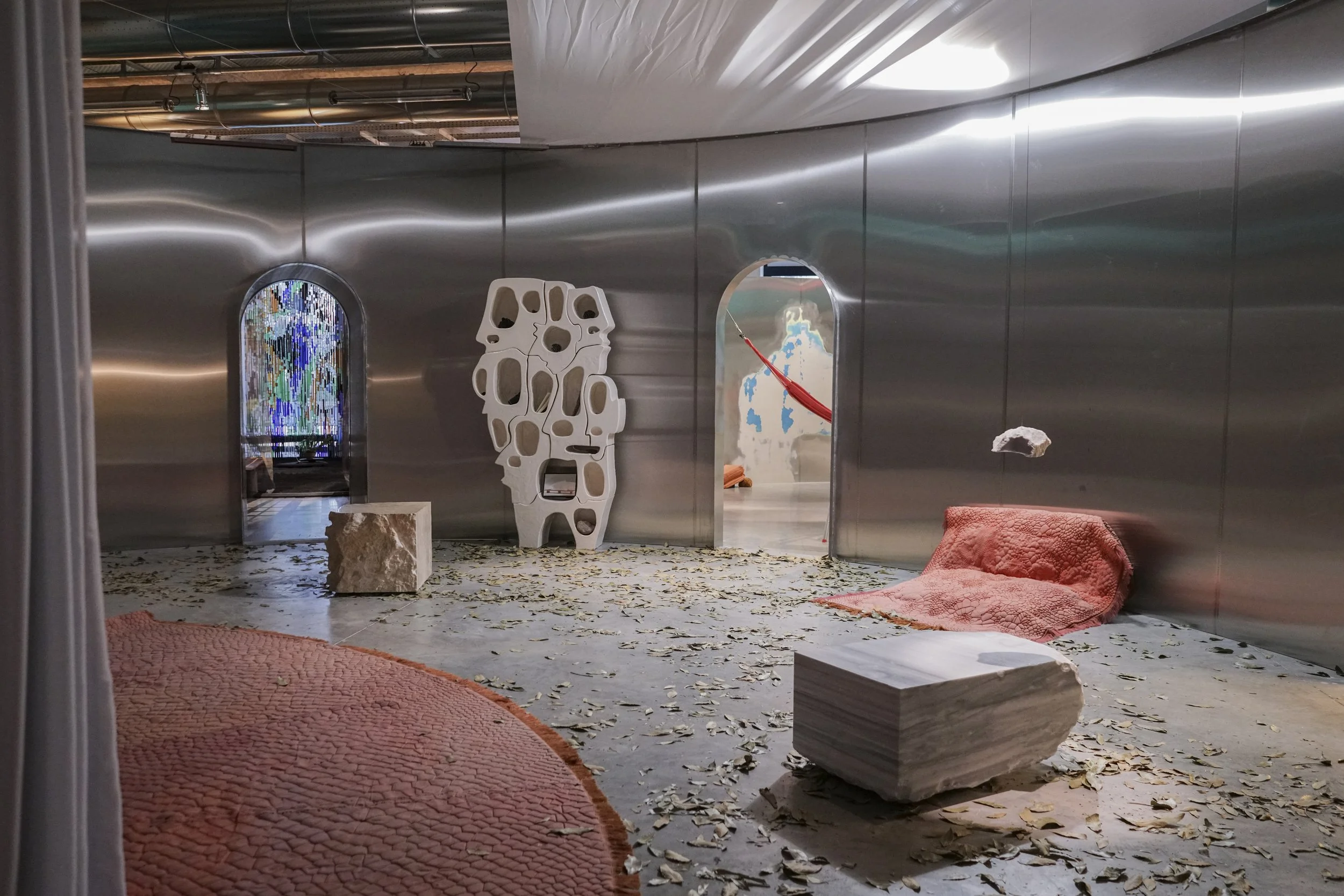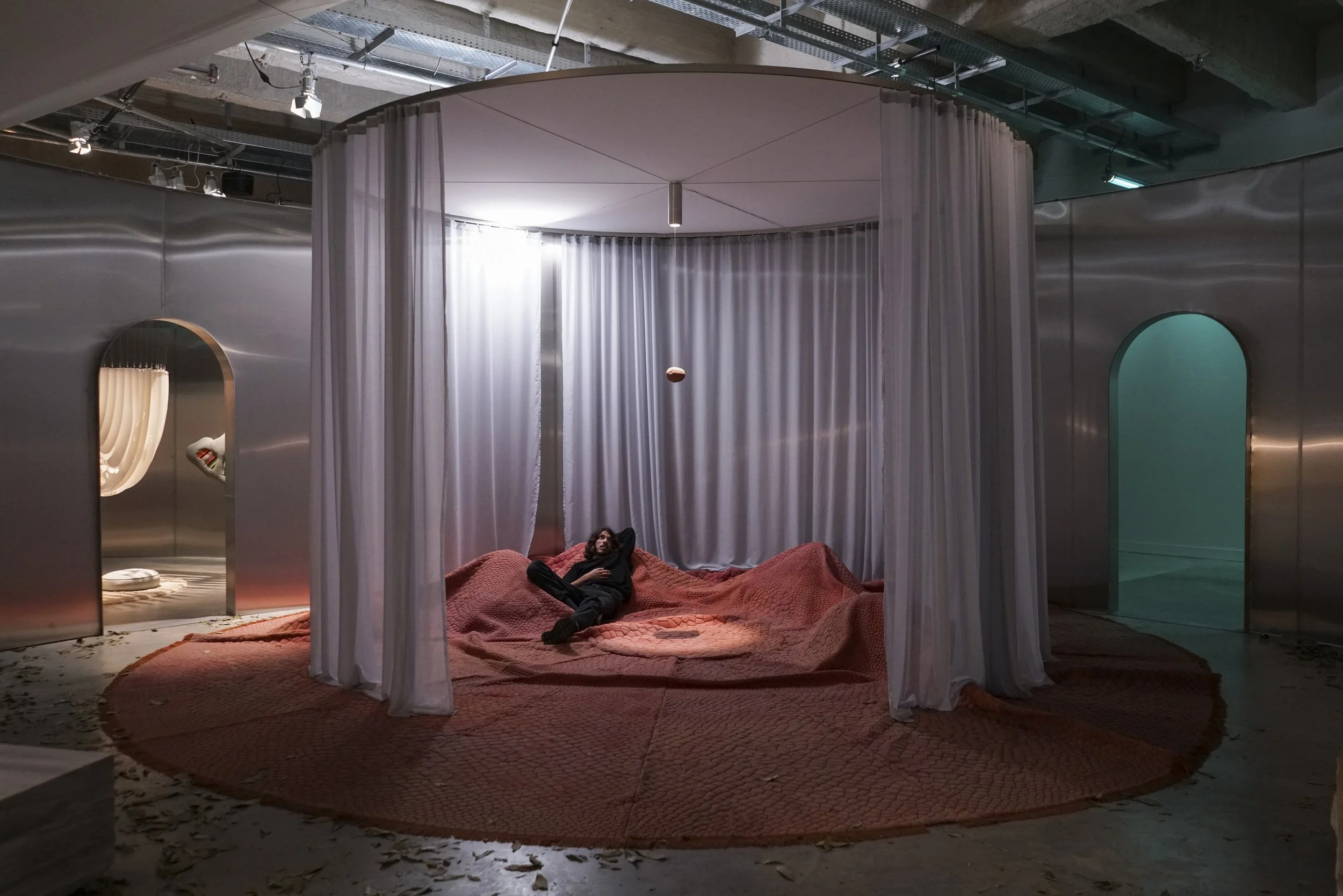Anima Ona
Freia and June, please introduce yourself:
We are Freia Achenbach and June Fàbregas, co-founders of anima ona. Our practice moves between design, research, and art, with a focus on illuminating socio-ecological transformation processes. Through our projects, we aim to foster sustainable visions for future living and cultivate new relationships between humans and their environments.
Portrait Anima Ona, © Pia Heer
#1 Can you tell us something about your training? What did you study and how did you find your way to working together?
We met while studying Industrial Design at the State Academy of Art and Design in Stuttgart. Our first collaboration happened by chance during a semester project. We quickly realized that our skills complemented each other and that we shared similar ideas about design and life. From that point on, our collaboration evolved naturally and has continued ever since.
#2 You work at the intersection of research, art and design. What would you say are the most important values in your projects?
We are driven by creating sustainable visions for future living that evoke harmony, sensitivity and diversity.
#3 For their first festival in summer 2023, the International Building Exhibition 2027 Stadtregion Stuttgart (IBA´27), invited you to create an installation for their festival headquarter in Stuttgart. Could you tell us something about that project?
Over the past five years, we have been exploring how leftover building materials can be transformed into a sustainable alternative to concrete using geopolymer technology. For the IBA’27 Festival#1 in 2023, we showcased this material research in an installation that visualized the transformation of old bricks, roof tiles, and ashes into a new building material. As part of the installation, we designed a public bench made from this material. Its adaptive design was inspired by ancient polygonal masonry, using tightly fitting individual elements that stabilize each other without the need for additional binding agents.
Masonry Bench, © Anima Ona
#4 You also had the opportunity to work in the context of Stuttgart 21, one of the largest inner-city construction sites in Europe. How did you experience working in this particular context? What inspired you during the process?
Like many major cities, Stuttgart is a place of dense human coexistence - a density that generates strong dynamics, cultural richness, but also a high potential for conflict. It's a space in constant transformation, where layers of history are continuously overwritten and reinterpreted. Nowhere is this more visible than on a construction site - especially that of Stuttgart 21, one of Europe’s largest urban building projects.
With our artistic investigation Archaeology of a City Mine, we aimed to capture this transformation. The various works open up space for interactive engagement and create connections between layers, reinterpretation, and superimposition. They function as a form of documentation - a memory for the future, once the process is complete and no longer physically visible.
Grafic design: Studio alisch berlec hönow x Tamara Wirth, Photo: © Tobias Hönow
Archaeology of a City Mine, © Anima Ona
#5 The objects that you design are also quite experimental in their form, such as your ‚Big Spectator‘ shelf. What was the inspiration behind this design, and what challenges did you face in its realization?
The “Big Spectator” is an extension of Freia’s “Spectator Shelf” series. We created a larger version for our installation Das Stumme spricht (“The Mute Speaks”) as part of the exhibition Places to Be at Fondation Martell. In this work, we designed a fictional living room that blurs the boundaries between human, object, and nature - a space meant to evoke a sense of grounding and connectedness through a poetic play of natural phenomena. Each object in the room interacts with visitors through gestures or subtle movements that invite interpretation. From the rhythm of a rotating lamp mimicking the movement of the sun, to the ambiguous shapes of the furniture, and even the dried leaves scattered on the floor - everything is marked by constant change and the represents life itself. Within this context, the Big Spectator contributes to the atmosphere through its multiple figurative forms, representing the living beings one might encounter in a natural environment - like a bird watching you from a branch or a deer passing by. As you spend time contemplating it, you begin to recognize various figures.
DAS STUMME SPRICHT, © Anima Ona
#6 Are there any materials that fascinate you at the moment and that you would like to work with in the future?
After focusing strongly on mineral materials like stone in recent years, we’re now curious to expand our approach to lighter materials such as wool, paper, and wax. Switching between different material qualities and production processes is very stimulating for us - it opens up new ideas for experimentation and encourages us to reinterpret materials in unconventional ways.
#7 How do you see the role of an architect in today's society?
Architects and designers have the responsibility to imagine new ways of engaging positively with both the environment and rapid technological change. Their role is not only to respond to current needs, but also to shape more sustainable, inclusive and thoughtful futures.
#8 How does your environment influence your work?
Most of our self-initiated projects are context-driven and arise from close observation of our environment. This could be triggered by noticing the ever-growing piles of construction waste, a longing for more greenery in the city we currently live in, or simply an aesthetic detail that intuitively finds its way into our design process.
#9 Three things that inspire you at the moment?
The wild plants that grow through asphalt cracks, along walls or kerbs — true survivors, reclaiming space and quietly challenging our urban norms.
For our upcoming exhibition at Künstlerhaus Stuttgart, we were inspired by Georgica by Virgil — a poetic reflection on rural life, labour and the human connection to nature. The work celebrates the everyday as something sublime, honouring effort, natural cycles and coexistence with the land.
And we are always most inspired by conversations with friends and new people we meet.
#10 What do you currently read, watch, listen to?
Reading „Design as an Attitude“ by Alice Rawsthorn, want to watch „Das Licht“ by Tom Tykwer, and listening to Rita Payés, Doechii and many more.
Links
website: animaona.com
Instagram: @animaona
Photo Credits: © Pia Heer, © Anima Ona, © Tobias Hönow
Interview by Loretta Pittino










